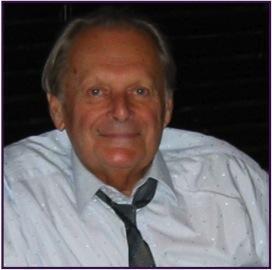 Today is the 10th anniversary of Dr. Vladimir Janda’s passing. In remembrance of him, the following are quotes and concepts from Dr. Janda, a pioneer in muscle imbalance and chronic musculoskeletal pain. His philosophy was considered ‘ahead of his time’ and his teachings continue to be seen in daily practice. Dr. Janda’s philosophy seems timeless…
Today is the 10th anniversary of Dr. Vladimir Janda’s passing. In remembrance of him, the following are quotes and concepts from Dr. Janda, a pioneer in muscle imbalance and chronic musculoskeletal pain. His philosophy was considered ‘ahead of his time’ and his teachings continue to be seen in daily practice. Dr. Janda’s philosophy seems timeless…
On movement and control:
- There are 2 main schools of thought in musculoskeletal medicine: Structural and Functional
- The sensorimotor system is one entity and cannot be functionally separated
- The unconscious reaction and speed of contraction are the most important for functional stability, not strength
- A muscle can be as strong as possible, but if it doesn’t fire at the right time, it’s useless
- Reflexive stabilization is a pre-requisite for coordinated movement
- Motor control programs in the CNS are the basis for all human movement
- Functionally, muscles work together in slings, chains and loops
- The muscular system lies at a ‘functional crossroad’ since it is influenced by stimuli from both the CNS and PNS
- 3 key areas of proprioceptive input are the cervical spine, SI joint, and sole of the foot
- All systems in the human body functional automatically except for the musculoskeletal system
- Muscles are vulnerable and labile structures that provide a window into the function of the sensorimotor system
- Pain is the only way the musculoskeletal system can protect itself
- Pain symptoms are not a reliable indicator in chronic pain syndromes
- Chronic musculoskeletal pain is mediated by the central nervous system
- Compensations within chains create more dysfunctional movement
- Changes in the sensorimotor system are reflected by changes elsewhere in the system
- The pelvic chain is the key in most musculoskeletal dysfunction
- Protective reflexes serve as the basis for all human movement and dominate in pathology
- Structural lesions rarely cause pain themselves; muscles are most often the cause of pain
- Often, the site of pain is not the cause of pain
- Altered peripheral input due to pain leads to changes in muscle activation, causing faulty movement patterns
- Defective motor learning prevents the motor system from properly reacting or adapting to different changes in the body
- Many signs and symptoms of impaired function have a hidden cause in an unrecognized dysfunction located elsewhere
- Muscle imbalance is a systematic and predictable response of the motor system
- Muscles respond predictably to pain and pathology at peripheral joints
- Tonic muscles are prone to tightness and phasic muscles are prone to weakness
- Altered tension is the first response to nociception by the sensorimotor system.
- Typical muscle response to joint dysfunction is similar to spastic muscles in structural CNS lesions
- Tight muscles are readily activated during movement because of a lowered irritability threshold
- The presence of a “crossed syndrome” indicates the presence of CNS-mediated muscle imbalance
- Muscle imbalance is compounded by a lack of movement through regular physical activity
- Muscle imbalance is an impaired relationship between muscles prone to facilitation and muscles prone to inhibition
- Prolonged muscle tightness leads to fatigue, which ultimately decreases the force available to meet postural and movement demands
- The patterns of muscle imbalance are based on the neurodevelopment of the tonic and phasic muscle systems.
- Muscle imbalance is an expression of impaired regulation of the neuromuscular system that is manifested as a systematic response often involving the entire body
- Muscle imbalance in todays society is compounded by stress, fatigue, and insufficient movement through regular physical activity as well as a alack of variety of movement
- The presence of a Crossed Syndrome indicates CNS-mediated pain
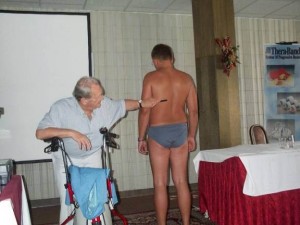 On evaluating and treating muscle imbalance syndromes:
On evaluating and treating muscle imbalance syndromes:
- Every ‘body’ tells a story… let the body speak to you
- Postural stability is a reflection of the function of the sensorimotor system
- Time spent in assessment will save time in treatment
- The test is the exercise; the exercise is the test
- There are 2 stages in motor re-learning: voluntary and automatic
- First and foremost, normalize the periphery and increase proprioceptive input
- Stretching the tight antagonist often restores activation of the agonist
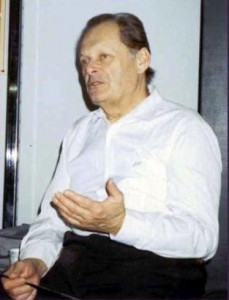
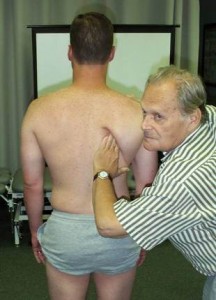





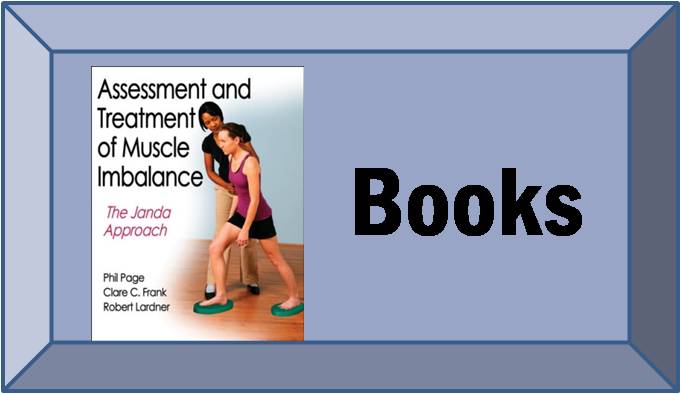
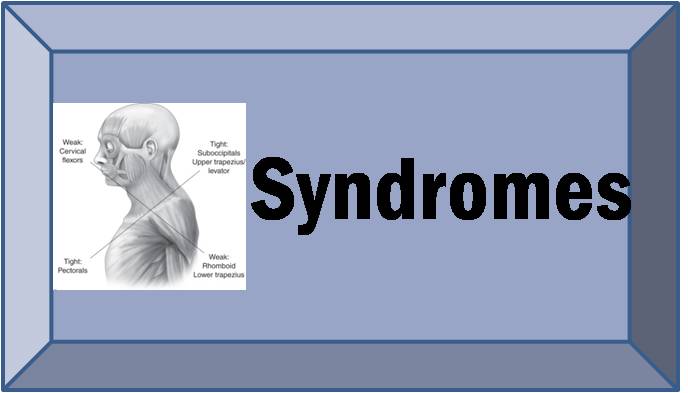
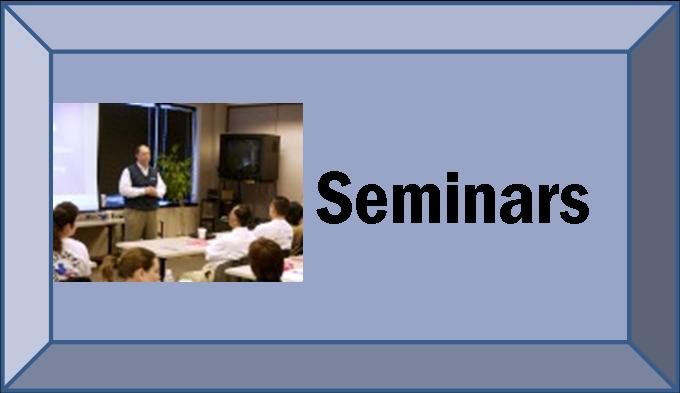
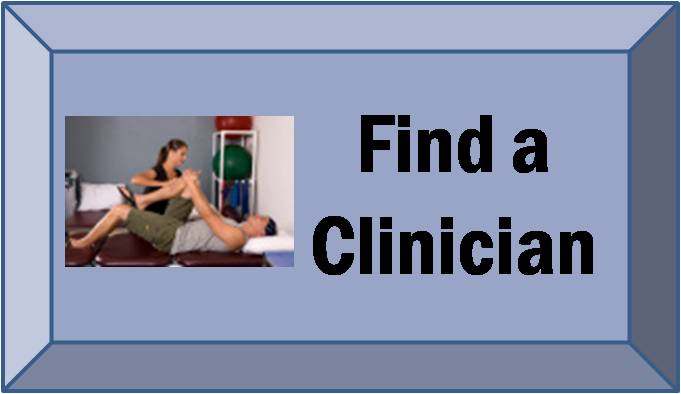




{ 6 comments… read them below or add one }
Every point is like a saying…..
I am in awe of his ability to verbalize the truths of the body. His words are profound, simple, succinct.
There is a concept of Anterior (AOS) and Posterior Oblique Systems (POS) that led to a sling concept of lumbar and SIJ stabilization. We are trying to find the original source for this concept. My thought it was Janda or Vleeming. Can someone help with a Janda or Vleeming reference?
Any help is appreciated
Hi Sandy. I know that Vleeming showed the anatomical link of the biceps femoris via the sacrotuberous ligament in his 1989 Clin Biomech paper. Janda talked about the functional importance of the posterior sling, in particular the link between the hamstring & ST ligament, then connecting the contralateral leg and arm via the thoracolumbar fascia. I’m not sure if the concept was originally Janda’s or Vleeming’s. Best Regards, Phil
what are the definitions of tonic and phasic muscle?
wikipedia says that mammals don’t have tonic muscle except in the eye and inner ear so i’m thinking that there is different definition meant here! thanks for your help.
There are different definitions of tonic and phasic muscles depending on the context. Traditional definition of tonic and phasic muscles are based on muscle physiology, innvervation, and fiber type. Janda used “tonic” and “phasic” to represent 2 different groups of muscles that had similar functional characteristics. Most notably, Tonic muscles are prone to tightness and phasic muscles are prone to weakness. For more info: http://www.muscleimbalancesyndromes.com/what-is-muscle-imbalance/